Affiliate disclosure: This post may contain affiliate links. Please see our Privacy Policy.
Dock plants are persistent perennials, which means you can forage it throughout the year.
In the spring, the greens are edible and in the fall the plant produces buckwheat-like grain that can be ground into wild foraged flour. The root grows large and deep, and it can be harvested for potent herbal medicine anytime.
There are a number of rumex species, but the most common and well-known is Rumex crispus. It goes by the common names Yellow Dock and Curly Dock. Other common rumex species include:
- Rumex obtusifolius – Bitter Dock or Broad Leaf Dock, as the name suggests, this type is generally quite bitter and has large broad leaves.
- Rumex patientia – Patience dock or Monk’s Rhubarb, this species is mild and is eaten as a vegetable in southern and eastern Europe.
- Rumex triangulivalvis – White dock, willow dock or narrow-leafed dock is identified by its long, flat, narrow leaves that vaguely resemble willow leaves in shape (only much larger).
- Rumex longifolius – Yard dock, door yard dock or northern dock, this species looks very similar to curly dock, but the flavor is considerably more bitter.
While some dock species taste slightly better than others, they’re all edible and eaten in the same ways.
Wild Dock Range
One of the lovely things about wild dock is that they grow just about everywhere. Like dandelions, dock just isn’t picky about where its seed lands. If it finds soil, it’ll try to grow, simple as that.
They’re common in urban environments, roadsides, abandoned fields, gardens, and woods edges. Just about anywhere the sun reaches the earth.
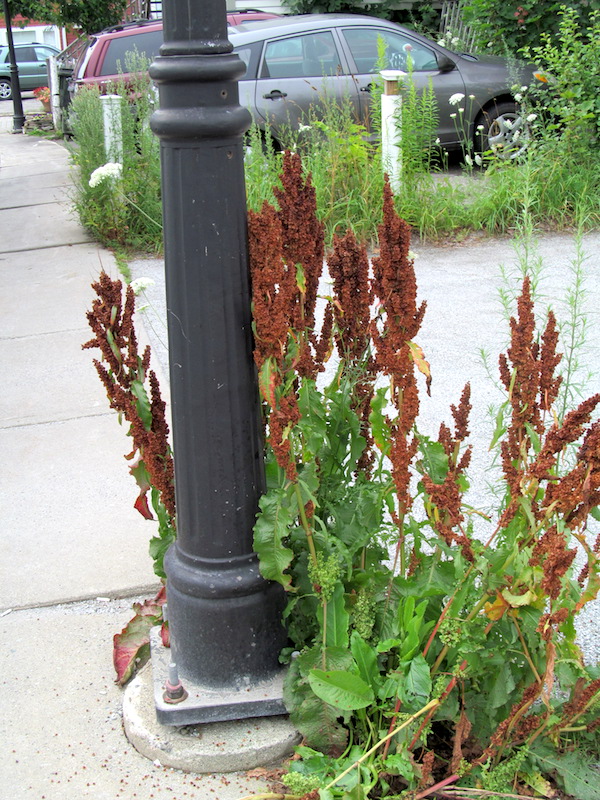
Dock Leaves
The best known edible portion of wild dock, the leaves are a tasty spring green. They need to be harvested very young in the early spring before they turn bitter.
Young leaves look a bit slimy and are curled tightly inward before they’ve unfurled. They should stretch when you pull on them, indicating they’re still very flexible and supple.
These young leaves can be eaten raw, or cooked in all the same ways you’d eat spinach or kale.
Here are a few ways to prepare young dock leaves:
- Dock Leaf Dolmas from Fat of the Land
- Spring Wild Vegetable Soup (Midwest Vingarola) from Forager Chef
- Double Dock Dip with Burdock Root and Curly Dock Leaves from Foraged Foodie
- Baked Dock Chips from Wild Food Girl
Slightly later in the season the leaves dry out and tear when pulled, and they’re no longer good eating.
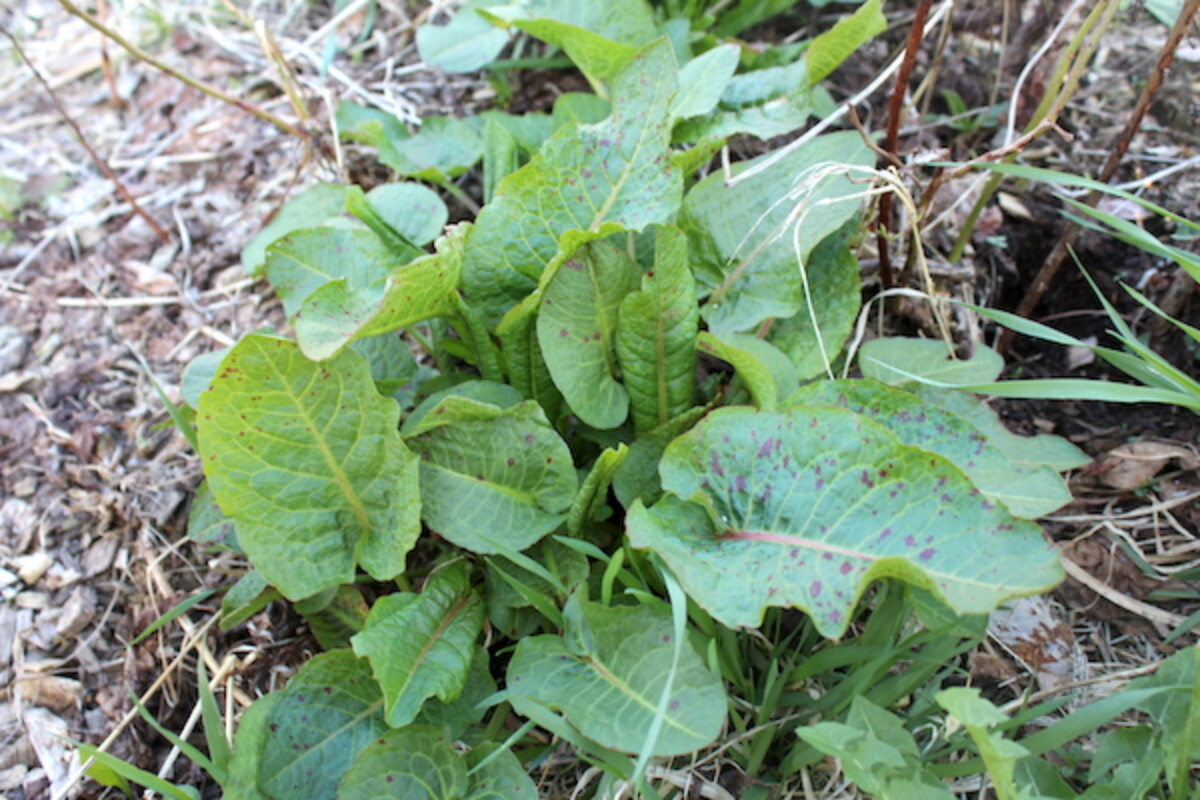
Dock Stalks
Beyond the tender green leaves, Samuel Thayer talks a great deal about eating the stalks of various dock plants. I’ll admit when dock stalks sprout I often have other wild edibles on my mind, and I’ve never actually cooked these. He makes a distinction between two different vegetables here:
- Dock petioles (or leaf stems) are the small stalks that attach each individual leaf to the base of the plant. These are eaten raw and supposedly taste like rhubarb.
- Dock Flower Stalks are available in the spring and early summer before they become tough and dry later in the season. According to Nature’s Garden, “cut the shoots at the base, or later, cut the tender top portion that bends easily…Strip the leaves and peel the tough astringent outer layer. You should end up with a light green shoot that has a mild tangy flavor and an agreeable texture that is not fibrous at all.” They can be eaten raw or cooked.
One of the best wild vegetables I tried last summer was burdock stalks, and from this description, I think dock stalks sound about as tasty. They’re on my list to try this year…
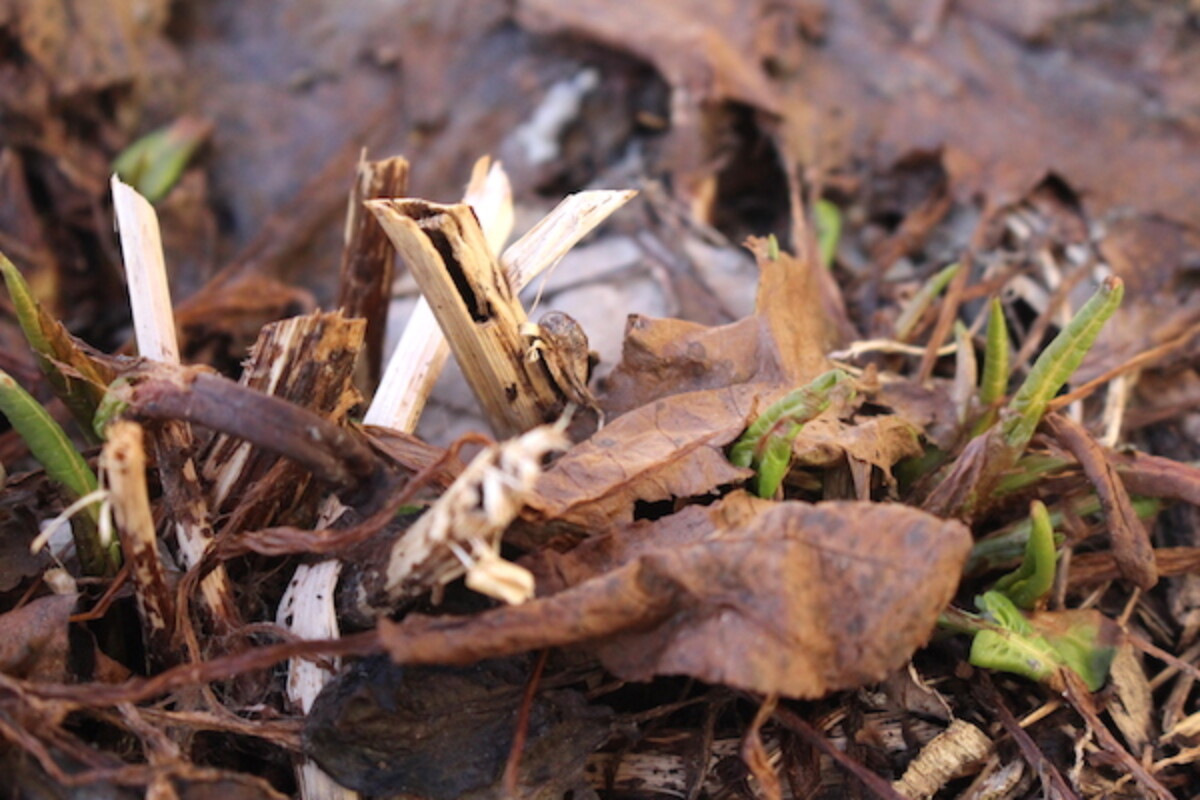
Dock Roots
The most commonly used medicinal portion of wild dock is the roots. The roots are generally considered far too woody for eating, and beyond that, they taste pretty horrible (in my opinion).
We’ve made both a vinegar extract from yellow dock root, and it was honestly one of the worst things I’ve ever tasted. Medicinal or not, you’d have to guarantee me that it’d cure cancer to get me to choke it down again.
My husband absolutely loves burdock all manner of bitter herbs, so he volunteered to try it first. The smell of dock is pretty intense, but it’s nothing compared to the taste. A small sip, and he immediately began spitting. A few seconds later he was at the sink trying to wash his tongue.
Of course, not being one to let a man suffer alone, I gave it a tentative try. Then both of us were at the sink trying to wash our mouths out.
In short, it tastes better than bleach, but only by a hair. Since then, even years later, anytime we’re taking a particularly abrasive tincture, reishi mushroom tincture or echinacea tincture, for example, he’ll grimace while drinking it but say, “At least it’s not yellow dock…”
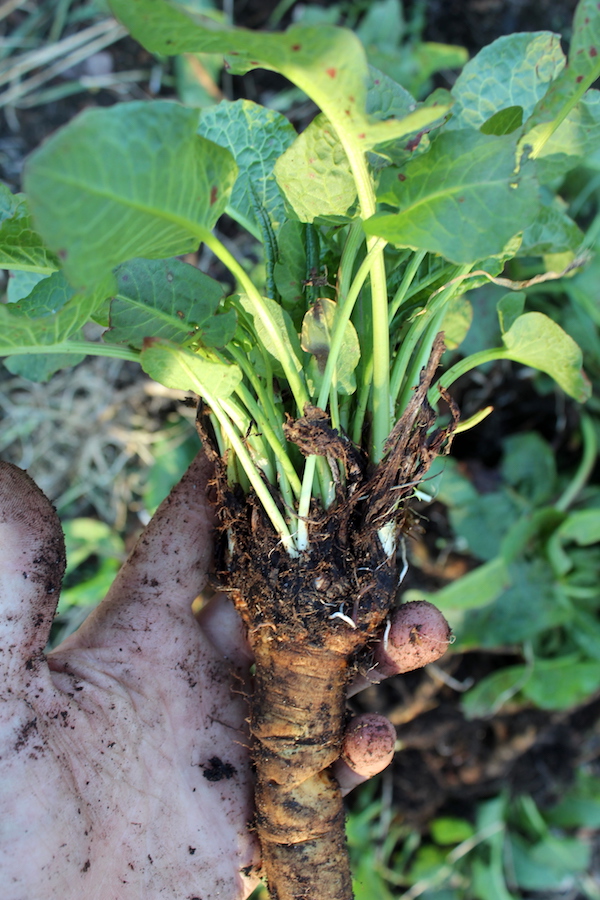
That said, it’s supposed to have some pretty impressive medical benefits. Yellow dock is best known as a bitter digestive herb and as a liver detoxifier. It’s taken to help balance hormones, regulate the digestive system (both diarrhea and constipation) and as a source of bio-available minerals.
I generally use burdock tincture for most of those uses, so after that first attempt at yellow dock extract, I haven’t ever used yellow dock roots again.
Plenty of people are not bothered by the taste, and it’s actually included in a number of popular detox teas, including:
I’ll admit I’ve actually had 2 out of the three of those teas, and they’re really good. Until I was doing research for this article, I had no idea that they included yellow dock root.
Perhaps a vinegar extract isn’t the best way to take yellow dock root, and it may just pull out all the worst flavors. If you do harvest yellow dock root, try drying it for tea rather than making an extract.
Dock Seeds
One of my favorite parts of dock to forage, wild dock seeds are related to buckwheat and the seeds resemble buckwheat grain. They mature in the fall, but you can still forage them in winter since the seeds will hang onto the tough stalks for months, and they’re still around to harvest in the early spring.
Since dock plants are perennial, the same plant will sprout under last year’s stalk in the spring. This gives you the unique opportunity to harvest young dock leaves and last year’s dock seeds at the same time.
I wrote a primer on harvesting and using dock seed flour, including half a dozen recipes too. I included it in a batch of pine bark cookies, made with both dock and pine bark flour. They also had home rendered squirrel fat, but that’s another story…
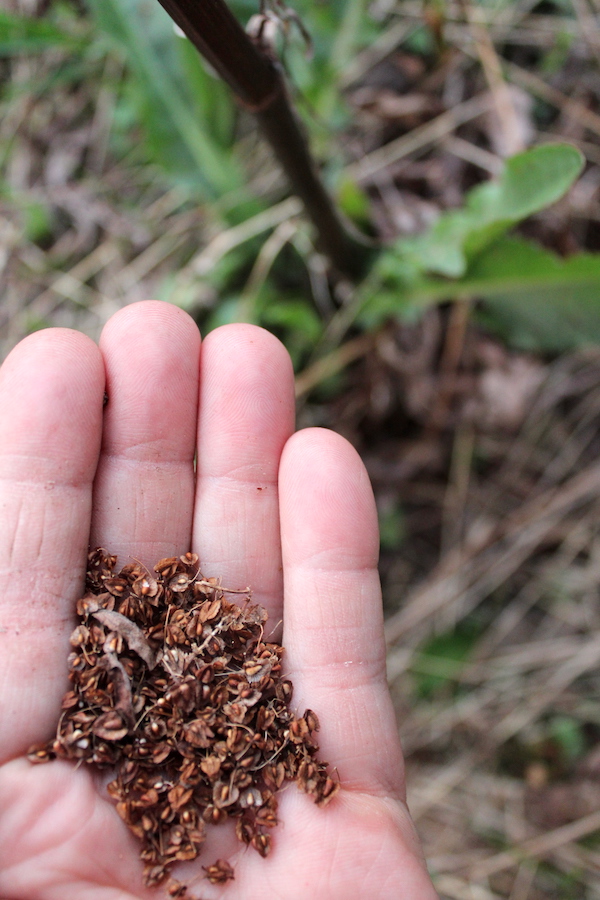
What do you think? Have you tried foraging yellow dock or any other dock species? How’d you use them? Leave me a note in the comments.
More Foraging Posts
- Foraging Wild Quinoa Grain
- Foraging and Using Yarrow
- Foraging Thistle for Food and Medicine
- Foraging Staghorn Sumac
- Medicinal Trees for Your Herbal Medicine Chest
 y
y















I am experimenting with making a vinegar of the dried seeds! I learned that seeds often have similar medicine to the root. Hoping it tastes better than your experiment… it will be a remedy to help my body utilize and absorb iron!
I was getting confused with which Rumex species I had though… I believe there is Rumex acetosella and Rumex crispus growing together. Do all Rumex species have similar medicine?
The Rumex genus can be divided into two different groups, the docks and the sorrels. Rumex acetosella is in the sorrel group. This is also an edible plant group. I would just do some research on that specific species to see what the benefits are.
I collected a small brown bag of yellow dock seed yesterday!
I plan to do exactly as you shared here. I will grind it into flour, and add it to baked goods!!
I was not aware it’s similar or related to buckwheat. I live buckwheat!
This list is wonderful and lovely and is Lori Kate you sharing your work Ashley !
Happy foraging,
Maddie
This is the first post of yours I have seen and I’m really impressed! You are informative, educated, include some fun things, and appear to have a sense of humor! I love the multitude of links and recipes. You have given quite a bit more information on dock than the other couple of sites I’ve looked at and you made it entertaining to boot! Thank you!
Can I be put on your mailing list? Best to you, Erika Lessard
You’re very welcome. We’re so glad you’re enjoying the blog. Yes, you can sign up for our newsletter on the website. Just look on the right-hand side under Ashley’s picture where it says “Subscribe here”.
I’ve a huge curly dock that comes up every year despite chopping it down early. This year it’s got 4 big seed stalks already- still green. I’m glad I did some more research on them-because I was thinking about your blog about making flour with the seed. Although I’m not a horse, cow or sheep, curly dock seems to be a known poison to them. If it can kill an animal, I opt out. Maybe I’ll miss nature’s most awesome dessert. Or maybe I’ll just skip going into a coma and dying from curly dock rather than hunger or curiosity. The effects in those animals seem to be it causes severe hypocalcemia, a type of oxalate poisoning. Interesting one sign of poisoning is abnormal salivating. You described both you and your husband having to spit and washing your mouth out. ?
Dock is a very commonly foraged plant. It’s totally up to you whether or not you choose to eat it of course but you can’t assume that just because something is toxic to an animal that it would also be toxic to humans. All species are different in the types of foods that they can consume. Dock can be eaten in a variety of different ways. The spitting was a result of taking the vinegar extract of the root. The vinegar extraction is for medicinal purposes and as Ashely mentioned in the post, she has no intention of taking it again.
As far as plants that resemble Rumex spp., that are also toxic, depending on where one lives, there might be some variety of foxglove that could potentially be mistaken for yellow dock. The content of the individual Rumex plant’s oxalic acid (that’s what gives the plant its pleasantly sour taste) can be quite strong, and might give one a stomach ache or even a mild diarrhea if too much is eaten.
I’d be a bit concerned for folks who feed yellow dock (or even other Rumex species) to their livestock, as there is a very real danger of the animals developing hypocalcemia, a type of oxalate poisoning. A good livestock veterinarian would know approximately how much consumption could be fatal (in as little as 12 hours, as in the case of a farmer friend of mine), and how much calcium gluconate solution could help.
I have what I think is yellow dock plants, except the roots are pink.
Did you scrape the surface of the root? When you scrape the root, you should be able to see the yellow root.
No, I didn’t scrape the surface of the root. I washed the root and broke it in pieces for my goats. It was pink all the way through.
Thanks for taking time to reply🙂.
I have tons of what looks exactly like yellow dock except for the roots.
That’s very interesting. Yellow should definitely have a yellow root. If you find out what it is, let us know.
I wonder if Belinda found some form of pigweed (amaranth) — in my area, redroot pigweed is very common, especially in farm fields, and if harvested and used correctly, can be very tasty. Perhap she might post a photo?
Thank you for sharing that. You could be correct. Unfortunately, I don’t think there is a way for people to upload photos to the comments, but she could find some pictures online of the pigweed and compare them to what she has on her property to see if they are the same.
Thank you. I pulled up another root and scraped off some pink. It is very light yellow underneath. I guess I wasn’t paying attention when I cut it up for my goats. Just wanted make sure there wasn’t a poison look alike.
Thanks again 🙂
You’re welcome. I am not aware of any poisonous look a likes.
I have dug, cleaned, chopped and dried curly dock to infuse into soapmaking oils. It makes a beautiful shade of pink!
That sounds absolutely lovely.
It’s true, I made some pretty shell pink soap last week from yellow dock root I grated and infused in oil for a couple of weeks. I used it as 20% of my oils, and kept it cool after soaping.
I have eaten green soup made with young curly dock since i was a child . I just found some yellow dock today . Iwill try it tomorrow
Sounds great! I hope you enjoy it.
I make a syrup with yellow dock and dandelion roots and rosehips in the fall. For the sugar portion i use blackstrap molasses, as it’s my iron tonic. It’s earthy but pleasant. I also tincture the root and definitely didn’t experience what you did with vinegar!
i never wuldof known that i could eat them i that they wer a cabage
Hi,
My family and I moved to very southeastern Alabama three years ago. In that time I’ve gained a huge love and appreciation for the ecology here through a plant identifier app that led me to the discovery of yellow dock last week. I have to say, as someone who suffers from chronic pain due to RA, I haven’t found ANYTHING in the herb world that has worked as quickly or effectively as yellow dock tonic! I have tried so many herbs, including but not limited to; turmeric, Indian ghost pipes, California poppy, Passion flower vine, etc.. Not even ibuprofen or Tylenol work as well as just a cup of this.
After looking up the plant and uses last week I tried the tonic but not consistently and I took it with other supplements. So when my pain abated I wasn’t sure what combo had worked.
Today I found more of the plant, dug it up (quite a challenge since we are in a drought and it grows in packed clay) and then cleaned, chopped and boiled it for about 30 minutes. I have been in constant pain the entire day and didn’t get a chance to process the plant until this evening. 20 minutes after a cup of the tonic and the pain in almost every joint was GONE. Just residual pain in the most extreme areas.
I did taste the greens after I had boiled the first batch. VERY bitter. The roots taste like artichoke to me though and I wondering with multiple rinsings if it might make it more palatable?
Also, my tonic was simply the whole plant boiled in water, no vinegar. Yes, very bitter, but I will happily chug 8 ounces and deal with that taste for a brief moment if it means not living in constant pain. I hope someone else finds this herb as useful as I have!
That’s fantastic. Thank you so much for sharing.
I picked the unfurled tender flower tips of stalks of curly dock in early spring I plan to lightly and quickly boil them They look a little like asparagus and the taste uncooked was not bitter.
I’ve been meaning to comment since I first read this last spring. I’ve made an effort to establish Dock plants around the house and they have taken well. I’ll be planting Curly Dock for the first time this year and have collected large quantities of seeds. All efforts to establish Monks Rhubarb have failed but I’ll keep trying. Last year I experimented with preparing Broadleaf Dock and found that the early leaves are palatable and the larger leaves when cooked are edible though not flavorful and can be a bit tough. I will try them as wrappings as you would stuffed cabbage or stuffed grape leaves. My best success came when I picked all of the late leaves and put them in a crock with salt, making Dock Sauerkraut. The result was surprising. Though the texture broke down more than it would with cabbage, it was not unpleasant and had the texture and flavor of cooked spinach, very good. and with the oldest and toughest leaves. I’ll be doing it again and will keep you posted.
I use the seeds like ground chicory root, as an additive to coffee. It makes the brewed coffee smoother, with a nice roasty-toasty flavor. I think coffee triggers a mild case of IBS for me. The dock seeds cured that.
Thank you, that’s really good to know!
Do you grind the seeds and add them with your ground coffee when brewing?
Thanks for the info. I have only tasted the leaves and then only once. It was summertime and they weren’t very tasty. Since then, I found that the chickens will devour the seeds and the rabbits will eat the leaves till they are severely frost bitten. I may do some more experimenting for myself in the coming weeks.